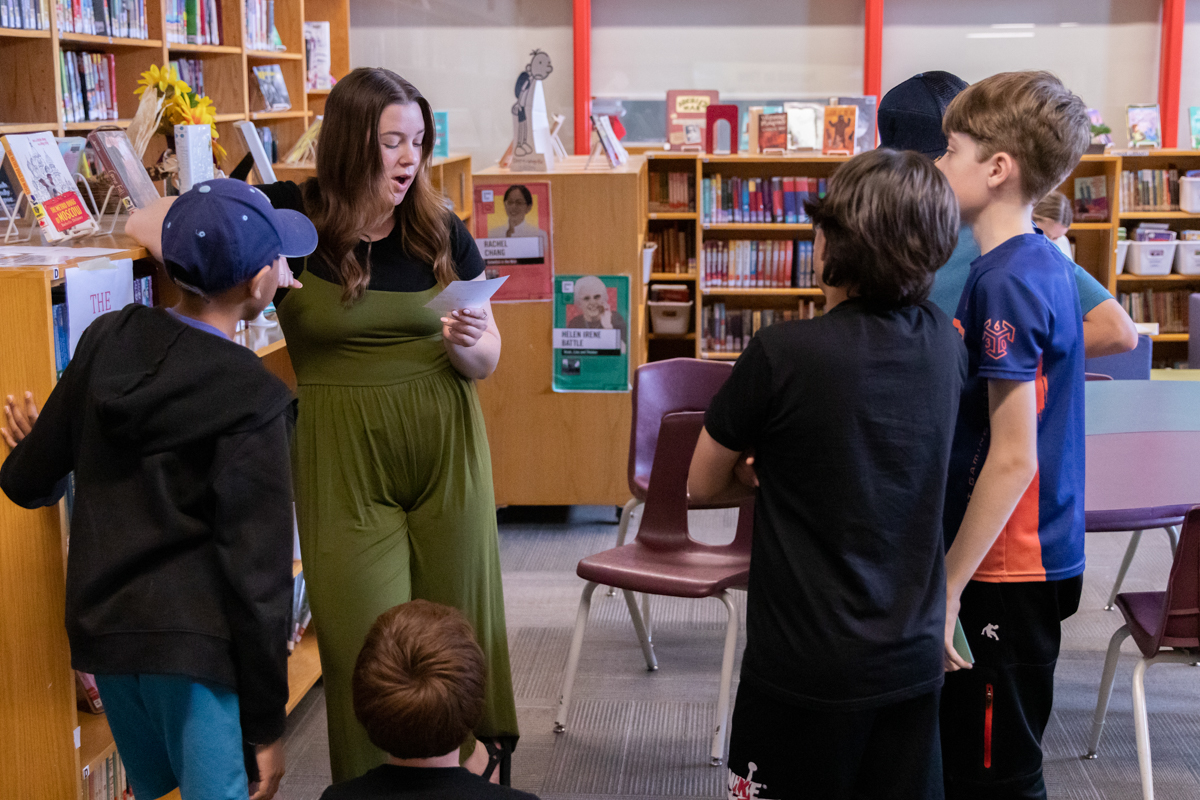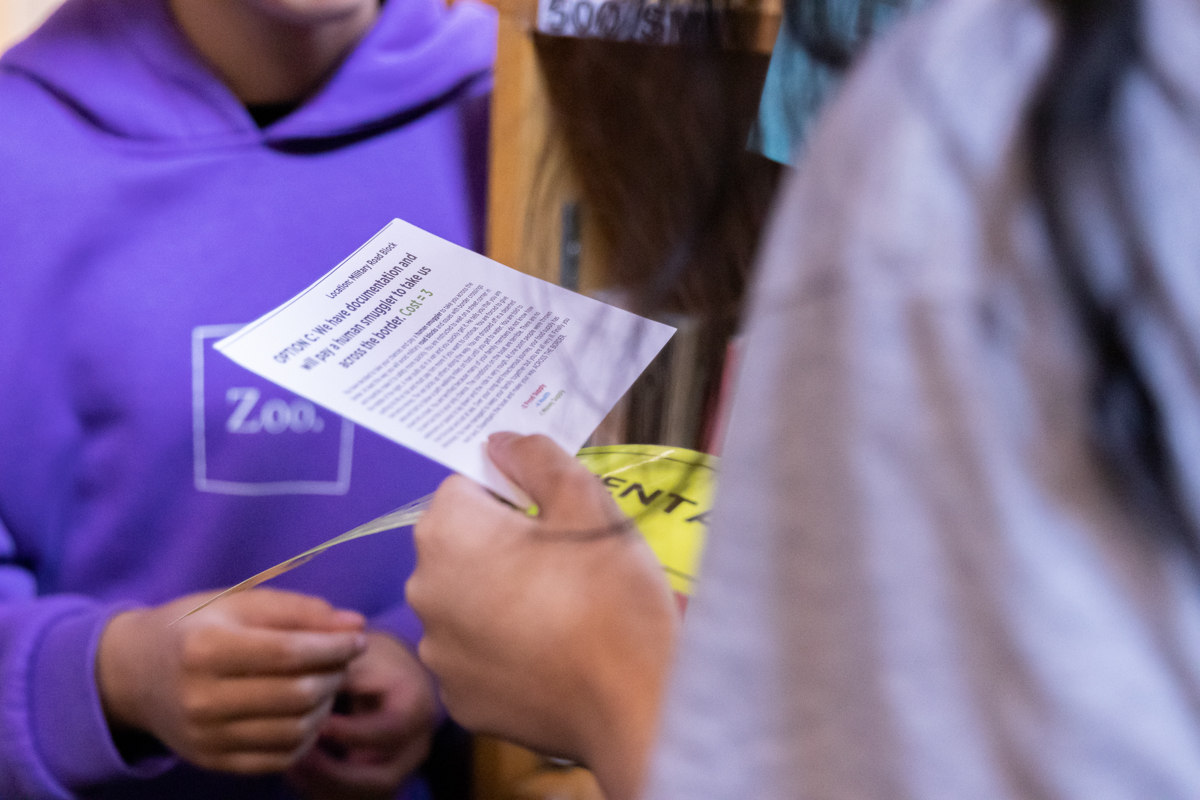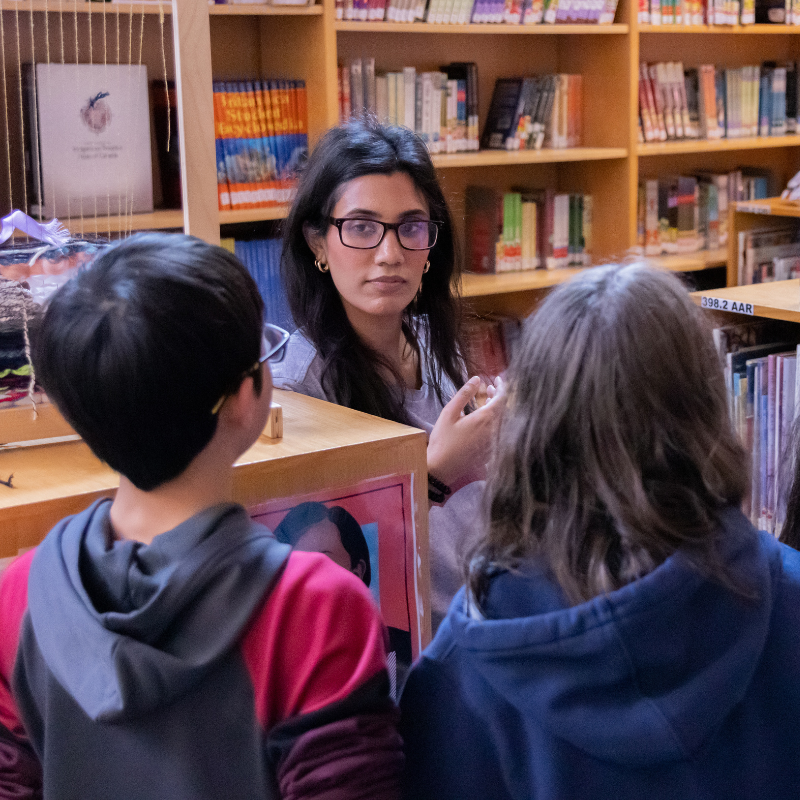What does it mean to be a refugee? What factors influence people facing impossible choices, like whether to flee your home? Students in Pembina Trails School Division this spring had the opportunity to experience these questions as part of a simulation activity presented by MCIC called Forced to Flee.
The simulation starts with a choice to leave their home immediately, or wait for official documents for emigration as conflict approaches their community. This begins an immersive series of decisions that students navigate together, facing consequences that may not be what they planned. Trying to preserve resource tokens representing food, water and health, students must navigate checkpoints and border crossings to reach safety.

Throughout Pembina Trails, 639 students in grade seven participated in Forced to Flee workshops this spring, the result of a partnership between MCIC and Pembina Trails School Division. Education Program Assistant Mia Kirbyson took the program to 27 classes, including Peter Janz’ class at Henry G. Izatt Middle School. He spoke to us about the impact the workshop had on his students.
“It allowed the students to be immersed somewhere long enough to really have a sense of what it feels like to be a refugee. It allows them to sit and soak in the information and experience, rather than just view it. I think that was the key, having the experience and having them moving.”
The experience had staying power with the students said Janz, and some even added refugee issues and human rights awareness to later class projects. “It has come up in class, and some of their posters have [refugee issues] on them. They’ve been connecting those dots, which has been really nice to see.”
Janz also noticed that making students an active part of the story helped them stay engaged for longer than usual. “Look on TikTok, look at their videos (…) They think about it for a moment, then they swipe away and don’t think about it again. I found that with this program, it’ll make them sit down and even ask for a longer time.”

With ongoing refugee crises around the world, it’s important to educate young global citizens about how and why people flee their homes. The most recent UN estimates suggest more than 100 million people are currently displaced, either within or outside their home country. Children make up an estimated 40% of that total, including 385,000 children born as refugees in camps or in transit each year – about as many as are born in Canada.
You can learn more about Forced to Flee and download the lesson plan alongside other great learning resources. For World Refugee Day on June 20, we also explored the importance of language around refugees and internally displaced people in our Instagram series, “Let’s Try.”

